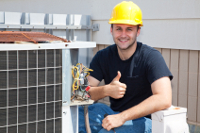Renewable Energy: How does hydropower work?
Renewable Energy May 19th. 2023, 2:54pmHydropower or hydroelectricity is the creation of energy from fast-flowing water to generate electricity. Come behind the scenes of a hydropower station to learn how hydropower works.
Visit our website: www.hydro.com.au
Follow us on Facebook: www.facebook.com/hydrotasmania
Sign up for our newsletter: www.hydro.com.au/the-spill
Transcript:
Hydro Tasmania is Australia’s largest clean energy provider and the largest provider of renewable energy in Australia.
Do you know how we generate electricity from water? This is sometimes referred to as hydroelectricity or hydropower.
It’s all about utilising the two forms of energy that water contains, potential and kinetic, and transferring it into electrical energy.
Potential energy, also known as stored energy, is gained by the construction of dams in varying design along natural waterways.
The water is captured both directly from rain as well as inflows from adjacent rivers, creeks, streams and melting snow.
We can also increase the size of existing lakes by diverting inflows and blocking outflows. An example of this being the Great Lake in our Central Highlands.
As the water rises behind the dam wall the dam’s water becomes a potential energy reservoir. When the demand for electrical energy occurs the stored water is released from the catchment by opening an intake gate or inlet valve.
As all hydropower stations are built lower than the water catchment itself. The water is connected via a combination of canals, tunnels and pipes into the power station below.
The power stations are sometimes built underground. Depending on the type of turbine, the water either flows through or directly hits the turbine runner and causes it to spin. The height between the reservoir and the hydropower station determines how fast and with how much power the energy of water will travel and be transferred to electrical energy.
The energy of the moving water has now transferred to mechanical energy and after it passes through the turbine is released back into the river below the power station.
In addition to generating electricity and through controlled methods, a measured amount of stored water can be released into the downstream river to maintain waterways for both recreation and aquatic life.
Above the spinning turbine is a shaft which connects to the generator. Inside the generator is a rotor and a stator. The rotor contains many magnets. The rotor spins inside the stator which is filled with copper windings.
Now the mechanical energy is transformed into electrical energy which is carried by the copper wire and fed into a transformer.
The voltage is increased to allow for the efficient transmission of energy to a substation near your town, where it is then stepped back down to a lower voltage. The energy is distributed throughout the town or city where it is further stepped down to 415 or 240 volts.
The energy generated from water helps power Tasmanian households and businesses. It’s also sold into the national grid supporting Australia’s transition to a renewable energy future.
And that’s how hydropower works!
 Email This Post
Email This Post
Compensation Disclosure
-
This site receives compensation for referred sales of some or all mentioned products.



